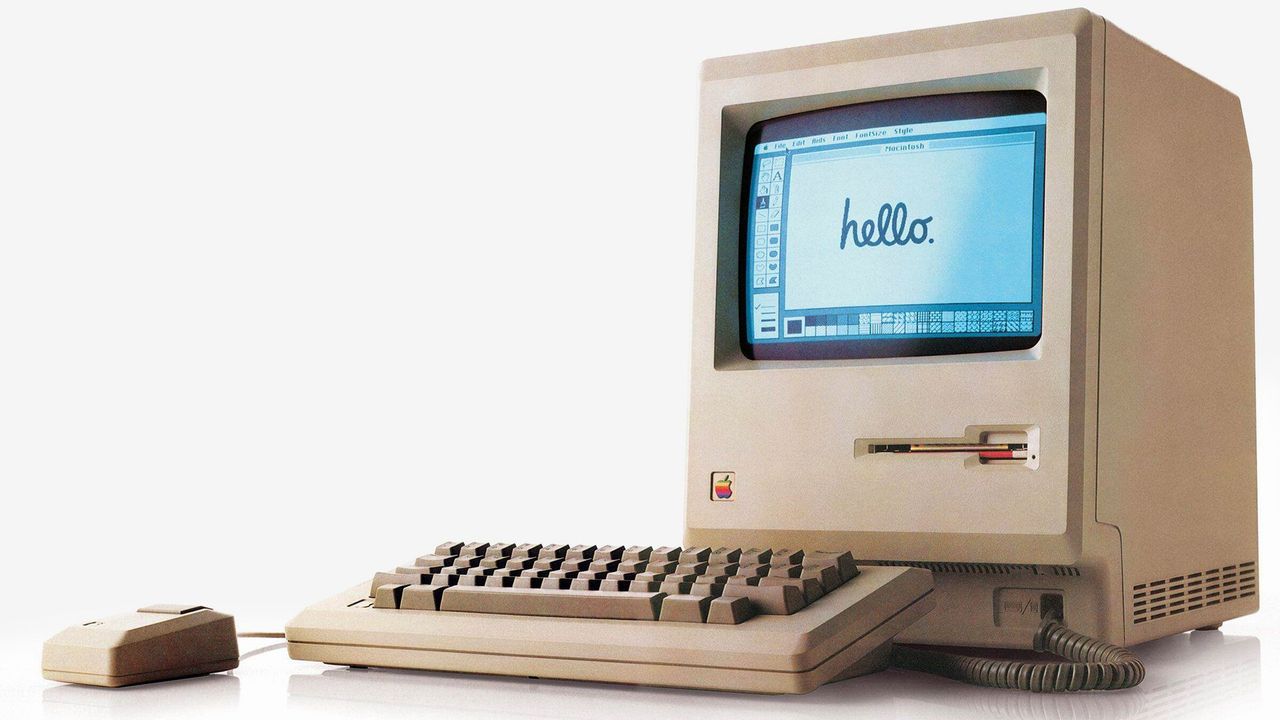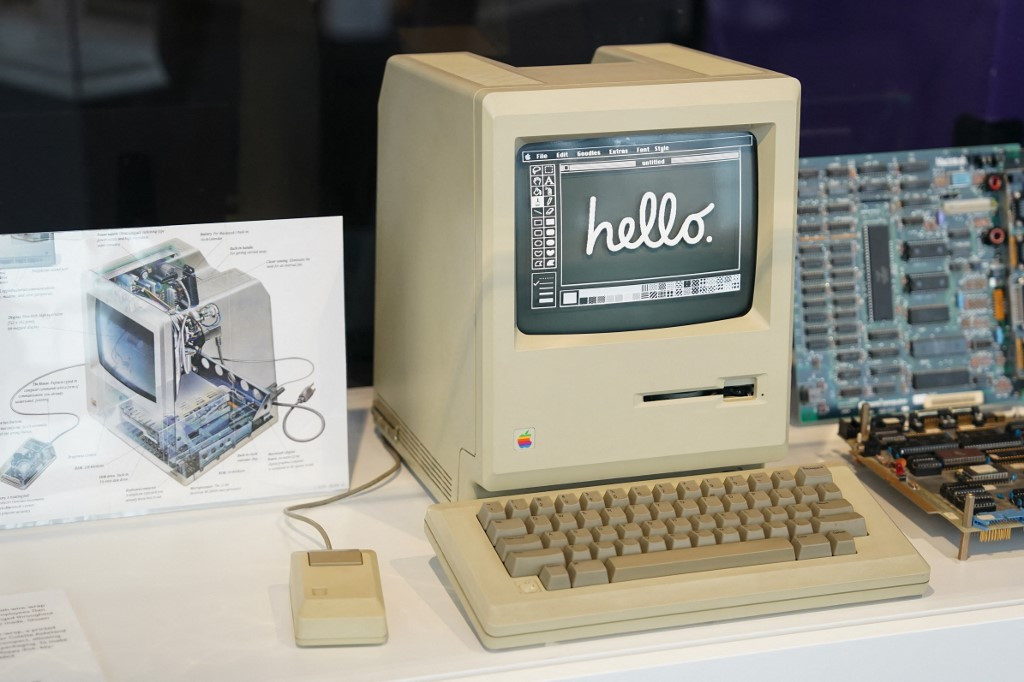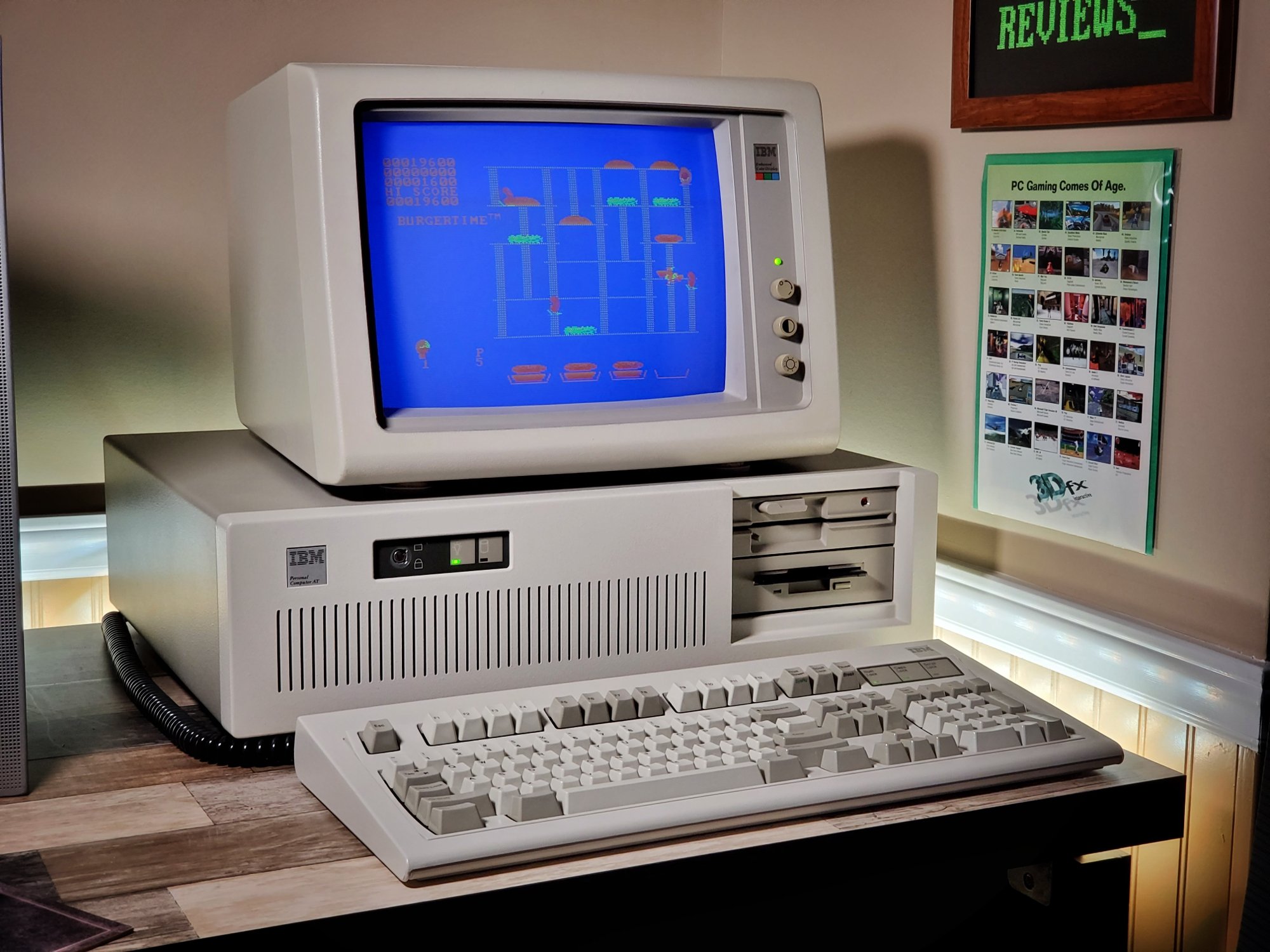The Original Macintosh: How Apple's Vision Changed Technology Forever
- Apple's bold gamble with a Super Bowl ad sparked a new era.
- From a slick GUI to its one-button mouse, find out why the Macintosh still echoes in today's tech.
- Think Apple's ecosystem is seamless now? Thank the original Mac for that spark.
In 1984, Apple introduced a product that would redefine not only the company but the entire landscape of personal computing: the Macintosh 128K. This small yet mighty machine encapsulated Apple’s vision of intuitive technology for the masses. As the world marks 40 years since its debut this year, we're looking back and trying to answer the question: What made the Macintosh so revolutionary? Why did it change tech history forever? Photo via BBC // The Macintosh 128K changed history forever when it was announced in 1984. But why?
Photo via BBC // The Macintosh 128K changed history forever when it was announced in 1984. But why?
The Launch That Made Headlines
January 22, 1984—Super Bowl XVIII audiences were introduced to Apple's Macintosh through an unforgettable commercial directed by Ridley Scott. Styled as an Orwellian allegory, the ad concluded with the message, “On January 24th, Apple Computer will introduce Macintosh. And you will see why 1984 won’t be like ‘1984’.” The ad, brimming with dramatic imagery and symbolism, set the tone for Apple's approach: bold, different, and user-focused.
Apple co-founder Steve Jobs knew he was not simply launching another piece of technology but something more profound. "Insanely great," as he famously put it, the Macintosh was built not just to be a tool but an experience. The campaign was emblematic of Apple's brand ethos—one that would ultimately make the company synonymous with innovation and style.
Why the Macintosh Stood Out
Unlike its predecessor, the Apple Lisa, which had a staggering price tag of $10,000, the Macintosh 128K was priced at a more attainable $2,500 (equivalent to around $7,585 today, adjusted for inflation). Although this was not inexpensive, it marked a significant step toward making user-friendly computing accessible. Photo via The Jakarta Post // The original Macintosh, the Macintosh 128K, is now a popular museum exhibit.
Photo via The Jakarta Post // The original Macintosh, the Macintosh 128K, is now a popular museum exhibit.
Key Features That Redefined Computing:
- Graphical User Interface (GUI): While not the first computer with a GUI (the Apple Lisa and Xerox Alto preceded it), the Macintosh made it more refined and approachable. The use of icons, windows, and pull-down menus made it easier for non-tech-savvy individuals to interact with computers.
- Mouse and Simplified Interaction: The single-button mouse was a bold deviation from more complex, multi-button options. This simplicity helped demystify computing for everyday users.
- Integrated Design: The all-in-one nature of the Macintosh—monitor, CPU, and disk drive in a compact unit—streamlined the user experience.
"Apple took what they learned from Lisa and brought it to a computer that was designed for the home, not just the office," said Abbas Ali, managing editor of Tbreak Media. This shift made the concept of the "personal" computer more literal than ever before.
A User-Centric Revolution
In 1984, computing was still largely a realm reserved for hobbyists, engineers, and businesses. IBM and Commodore had carved out significant shares with products that emphasized technical capabilities over user experience. The Macintosh, however, was different. By focusing on the average consumer—students, teachers, and home users—Apple prioritized usability over raw performance. Photo via Reddit // By contrast, this is IBM in 1984. while their computers were advanced, they lacked the breakthrough visually pleasing user interface of Apple's Macintosh 128K, released the same year (1984).
Photo via Reddit // By contrast, this is IBM in 1984. while their computers were advanced, they lacked the breakthrough visually pleasing user interface of Apple's Macintosh 128K, released the same year (1984).
Manish Pravinkumar, a senior consultant at Canalys, remarked, “It was the first time consumers were given a user-friendly means of interacting with a computer, introducing the first GUI. It established a new industry standard for user interfaces.” The Macintosh didn’t just represent a new product; it signified the start of computing as a lifestyle choice.
Challenges and Triumphs
Despite its groundbreaking approach, the Macintosh 128K was not an immediate commercial success. Its limited RAM and inability to multitask were significant drawbacks that stymied initial sales. The Macintosh II and SE/30 models, released in subsequent years, ultimately built upon the original's promise, solidifying Apple’s reputation for innovation.
Even so, the Macintosh 128K laid the groundwork for a new era. By the time the Power Macintosh hit the market in 1994, and later the Intel-based and M-series Macs, Apple had become synonymous with cutting-edge design and seamless user experience.![]() Photo via Apple // Apple's latest Macs, announced this week, feature Apple's latest custom silicon: the Apple M4, M4 Pro and M4 Max.
Photo via Apple // Apple's latest Macs, announced this week, feature Apple's latest custom silicon: the Apple M4, M4 Pro and M4 Max.
Legacy and Influence:
- Design Philosophy: The Macintosh’s focus on aesthetics and user experience inspired future products like the iMac, iPhone, and iPad.
- Standardization of Interfaces: It set the blueprint for operating systems that followed, prioritizing a standardized look and feel with recognizable interface elements like windows, icons, and menus. Apple's innovations undeniably went on to shape what would eventually become Microsoft Windows.
- Apple’s Ecosystem: The Macintosh was the beginning of Apple's journey toward creating an interconnected ecosystem, a strategy that has evolved into seamless integration between Macs, iPhones, iPads, and other Apple products.
“The ‘1984’ concept was all about individual freedom from ‘Big Brother’ and the beginning of the personal computer revolution,” noted Rolf Illenberger, founder of VRdirect. Ironically, while the Macintosh heralded freedom from technological barriers, Apple today is a company that seamlessly integrates technology into every aspect of life, making the boundary between tech and human connection almost invisible.
Why the Macintosh Still Matters
Forty years later, the original Macintosh is more than a museum piece; it’s a reminder of the power of simplicity and user-focused design. In an era where raw specifications often steal the spotlight, the Macintosh's legacy teaches us that user experience is just as vital—if not more so—than the technology powering it.
Today, Apple’s commitment to this principle is evident in its current product lineup, from the latest M4 MacBook Pros, iMac and Mac mini to iOS devices. The DNA of the Macintosh continues to influence how we interact with technology, reminding us of the shift that started in 1984: from seeing computers as machines to embracing them as extensions of human capability.
Recommended by the editors:
Thank you for visiting Apple Scoop! As a dedicated independent news organization, we strive to deliver the latest updates and in-depth journalism on everything Apple. Have insights or thoughts to share? Drop a comment below—our team actively engages with and responds to our community. Return to the home page.Published to Apple Scoop on 3rd November, 2024.
No password required
A confirmation request will be delivered to the email address you provide. Once confirmed, your comment will be published. It's as simple as two clicks.
Your email address will not be published publicly. Additionally, we will not send you marketing emails unless you opt-in.